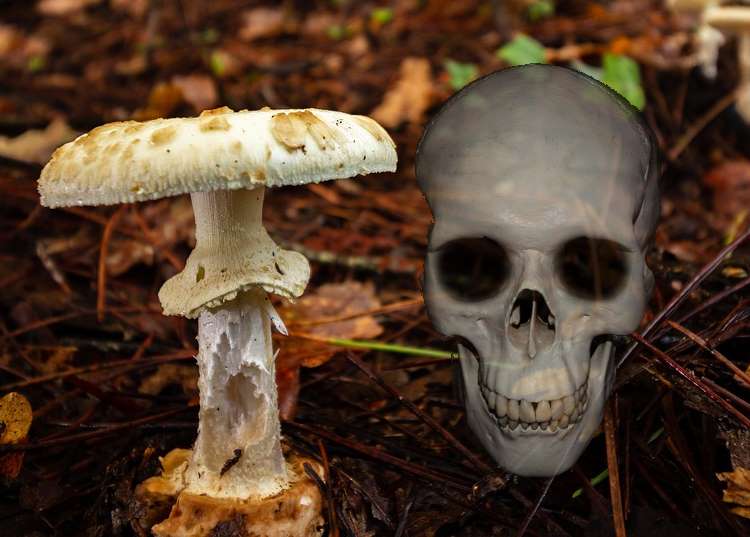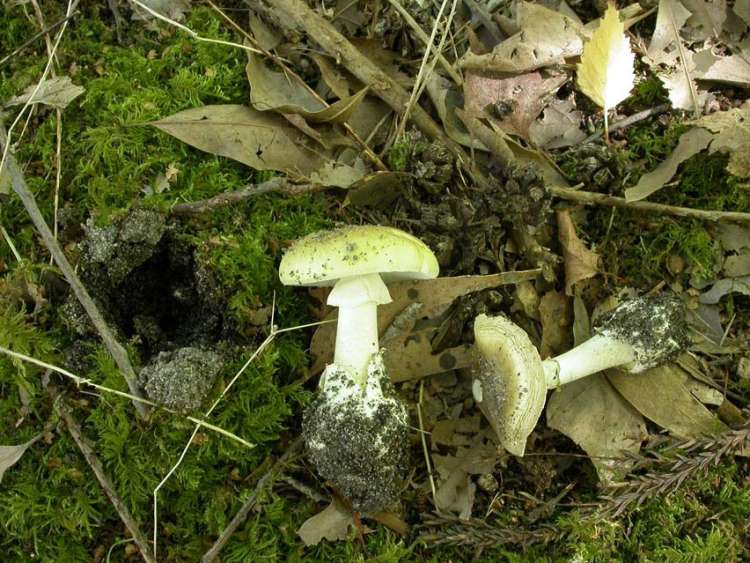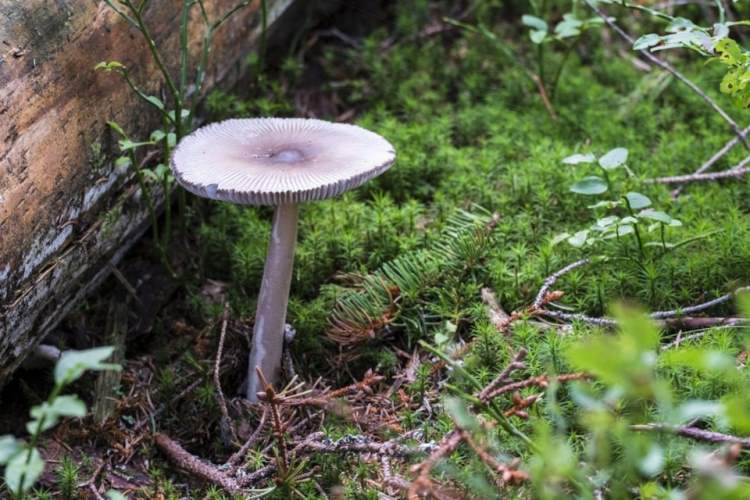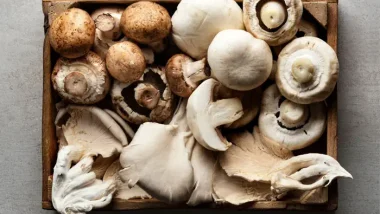The Destroying Angel mushroom and the Death Cap mushroom are two of the most poisonous mushrooms in the world. These deadly mushrooms belong to the Amanita genus. These mushrooms contain harmful components called amatoxins, which don’t disappear just by frying, freezing or boiling.

As much as you love to eat mushrooms, you should know that not all mushrooms are fit for consumption. When debating on whether a mushroom is safe to eat or not, it is best to carefully examine it and identify it, before cooking and consuming.
Where they Grow
Destroying Angel mushrooms are mainly found in North America and Europe. They grow near the edges of woodlands, near trees, on lawns and in places where organic matter is buried. You can spot them mostly in the autumn and summer season.
On the other hand, the Death Cap mushroom is found in Europe, but is spreading to other parts of the world like North Africa, South America, Asia and Australia. They are also spotted in the autumn and summer seasons, and are usually found a few inches from oak trees and Norway spruce.
The problem is that it is sometimes difficult to identify different types of mushrooms. Amanitas thrive mostly near trees, so it’s best to avoid eating any mushroom growing around trees. It’s actually a good idea not to eat any mushrooms growing in the wild unless you are an expert at identifying them, since their potential lethality is not worth the risk.
How to Identify the Mushrooms
It is very important to differentiate between an edible mushroom and a poisonous one, because your life can literally depend on it.
Death Cap
A Death Cap mushroom is characterized by yellow or green spots on its cap, white spores and many crowded gills beneath the cap which are detached from the stalk. Their stems are 1-6 inches long and the diameter of the cap is 2-6 inches wide.

The Death Cap mushroom has an ammonia-like smell, or a smell that resembles house hold cleaning detergents. To safely smell the mushroom put it about 7cm away from your nose. The Death Cap’s smell is unpleasant and easily distinguishable.
According to this article in The Atlantic, in 2017, after having a lot of rain, California had a rash of Death Cap poisonings:
“Over just two weeks in December, the California Poison Control System logged 14 cases of death-cap mushroom poisonings in the northern half of the state, according to a report this month. Previously, it’s gotten only a few a year. The death cap (Amanita phalloides), which is native to Europe, is one of the most poisonous mushrooms in the world. Three of the victims required liver transplants. One of them, an 18-month-year-old girl, suffered permanent brain damage.”
Destroying Angles
Just like the Death Cap, Destroying Angels have white stalks, white spores and white gills. They have pinkish or yellowish spots at the center of their white caps, and their gills are free and not attached to the stalk of the mushroom. The cap has a diameter of 2-4 inches, their stalks are long and about 3-6 inches, and they have a ring on the upper part of the stalk.

Most people who have tasted these highly poisonous mushrooms have found them to be sweet. At all costs, avoid tasting mushrooms as a way of identifying them. A small amount of these amatoxins can cause serious poisoning of an adult.
Symptoms of Poisoning
A victim of poisoning may exhibit the following symptoms: abdominal pains, diarrhea, vomiting and nausea. In severe cases, the victim can have convulsions. The symptoms typically occur 5 to 12 hours after the mushroom is ingested, but they may disappear, making you think you’re ok, and the mushrooms are safe to eat. But after 48 hours, the symptoms can return severely, and by this time the toxins have begun to affect the liver and kidneys, leading to the possible failure of these organs and eventually possible death.
Once you notice that you are not well, seek medical attention immediately and if possible bring a sample of the mushroom you ingested when going to see a doctor. In extreme cases doctors have had to perform a liver transplant. 90% of deaths caused by mushrooms, in the United States, are caused by these two mushrooms
How to Get Rid of the Mushrooms
After identifying the poisonous mushrooms on your lawn, you need to get rid of them immediately because anyone in your area is at risk. It’s likely that a child may come into contact with them and accidentally consume them while playing. Your pet, a neighbor’s pet, or even wild animals may also accidentally consume the deadly mushroom. Here are some ways to get rid of them
Wear a pair of gloves and remove the mushroom by pulling from the roots, as far down as you can reach, to avoid it growing again. Then put the mushrooms in a plastic bag and throw them away.
For faster decomposition and prevention of the growth and survival of the mushroom, use nitrogen-rich fertilizer on your lawn area.
Remove any rotting wood and decaying roots from your lawn because they can be a source for the growing mushrooms.
Apply fungicide if mushroom growth persists carefully following the instructions given on the fungicide.
Before getting excited about mushrooms you spot, whether in the woods, on the side walk or on your lawn, be sure to examine them carefully. Your health, and even your life, may depend on it.

